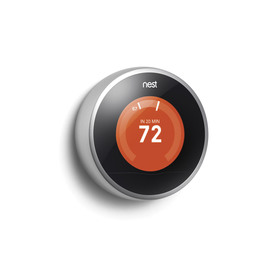
Reduce the Climate Change Impact of Your House 10 Ways
1. Caulk or weatherstrip windows and doors. Heating accounts for the biggest chunk of most utility bills – and offers the most opportunities for money and energy savings. Did you know that the energy used by the average home generates twice as much pollution as the average car? Materials for the average twelve-window, two-door house could cost about $25, but savings in annual energy costs might amount to more than 10 percent of your yearly heating bill. According to the Department of Energy, if every gas-heated home were properly caulked and weather-stripped, we’d save enough natural gas each year to heat almost 4 million more homes. You can find weatherstripping at most hardware stores. To minimize indoor air pollution from the weatherstripping materials you use, try water-based caulks like Quick Shield VOC-Free Sealant or Polyseamseal.
2. Install storm windows and doors. Combination screen and storm windows and doors are the most convenient and energy efficient because they can be opened easily when there is no need to run heating or cooling equipment. Installing high efficiency Energy Star windows can reduce heating and cooling costs by 15 percent; you can save from $125-$340 a year when you replace single pane windows with their Energy Star equivalents. If you don’t want to buy new windows, cover existing window with a heavy-duty, clear plastic sheet on the frame. You can buy a ready-made kit again at most hardware stores. A third alternative? Thermal draperies, made with a thick, fiber-filled backing to fit snugly against the entire window frame, can reduce heat loss by as much as 50 percent and save you $15 per window each winter. Even simple heavy drapes can save about $10 per window annually.
3. Insulate. You can reduce your energy needs by as much as 20 to 30 percent, and save about four months’ worth of household energy, by investing in insulation. Focus on your attic floor or top floor ceiling, crawlspace, exterior walls. basement ceilings and walls, and rooms over unheated spaces, like garages. The “Simply Insulate” website maintained by the North American Insulation Manufacturers Association will tell you how much insulation you need in the different parts of your house, depending on where you live. Think about using cotton insulation made from recycled cotton or denim scrap that will have no impact on your indoor air quality, unlike the formaldehyde ingredients in fiberglass insulation.

5. Get an energy audit. At low or no cost, your local utility may provide a specially trained auditor to examine your home and explain what inexpensive and free energy conservation actions you can take to save money and energy immediately. The auditor may also take an infrared photograph of your home to help you pinpoint exactly where heat is being lost. You can also use this do-it-yourself audit tool developed by the city of Seattle.
6. Set your water heater to 120 degrees. If you currently heat your water to 140 degrees, you may save as much as 10 percent on water-heating costs by dialing the thermostat down a bit.
7. Wrap your hot water pipes in insulating tape or foam. You’ll reduce the loss of heat through the hot water pipes that move hot water from your water tank to your faucets.
8. Use less hot water. Wash laundry in cold water. Install low-flow showerheads and faucet aerators. Fix leaky faucets. Wash full loads of laundry and dishes.
9. Maintain your furnace. If you heat with oil, have your furnace serviced at least once a year to save 10 percent in fuel consumption (if you do this in summer, you’ll get cheaper, off-season rates). Clean or replace the filters in your forced-air heating system each month. Dust or vacuum radiator surfaces frequently. If you must replace your furnace, buy the most energy-efficient model you can afford. If you have a fireplace, keep the damper closed to avoid losing as much as 8 percent of your home’s heated or cooled air.
10. Upgrade your appliances. When you replace your appliances, choose Energy Star models, which use 10-50% less energy and water than the standard alternatives. If just one in 10 homes used ENERGY STAR qualified appliances, the environmental benefit would be like planting 1.7 million new acres of trees.
Here are more energy-saving tips that save money, too.
Can “clean” coal or nuclear power solve our climate change problems. I don’t think so.
Here’s why climate change matters to women in particular.


















5 thoughts on “10 Ways to Reduce the Climate Change Impact of Your House”
This is a great list Diane!
I love this post! It’s already freezing in my house and it’s only the start of October. I try to resist the urge to turn my furnace on until November if I can…
Great, actionable, realistic list, Diane! Thank you!
We’re 10 out of 10!
Great information – Linked to this on my blog!
Superb tips, Diane! It’s great because they’re actually doable. It may take some time, though, since some of them require you to shell out some money for your home. But long-term savings is the point here, right? You just need to have some patience to achieve your desired ROI.
Comments are closed.